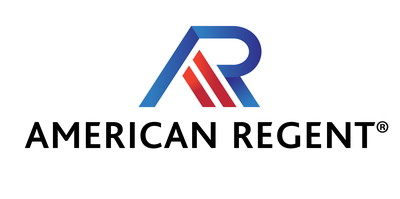Daiichi Sankyo, Inc. and American Regent, Inc., a Daiichi Sankyo Group company, today announced that the U.S. Food and Drug Administration (FDA) has approved Injectafer for pediatric patients (who are 1 year of age or older) with iron deficiency anemia (IDA) who are intolerant to oral iron or who have had an unsatisfactory response to oral iron.
|
BASKING RIDGE, N.J. and SHIRLEY, N.Y., Dec. 16, 2021 /PRNewswire/ -- Daiichi Sankyo, Inc., and American Regent, Inc., a Daiichi Sankyo Group company, today announced that the U.S. Food and Drug Administration (FDA) has approved Injectafer for pediatric patients (who are 1 year of age or older) with iron deficiency anemia (IDA) who are intolerant to oral iron or who have had an unsatisfactory response to oral iron.1 For all patients weighing less than 50 kg, the recommended dosage is Injectafer 15 mg/kg body weight intravenously in two doses separated by at least 7 days per course.1 "We are pleased to build on the effective and proven treatment of Injectafer for adult IDA patients with the approval of this new pediatric use," said Linda Mundy, Chief Medical Officer at American Regent, Inc. "More than 1.7 million adult patients have been treated with Injectafer in the U.S. 2 Pediatric healthcare providers now have an option for pediatric patients as young as one year of age with IDA who are intolerant to oral iron or who have had an unsatisfactory response to oral iron.1" The most common adverse reactions in pediatric patients (≥4%) are hypophosphatemia, injection site reactions, rash, headache, and vomiting.1 Injectafer was first approved by the FDA in 2013 for adults as a 1500 mg course of treatment, administered as two doses of 750 mg each separated by at least seven days.1 Injectafer has been studied in more than 40 clinical trials that included over 8,800 patients worldwide.3 Injectafer has been approved in 83 countries since initial European Union approval in 20074 and is the most extensively studied intravenous iron.5 About Injectafer® Injectafer is manufactured and marketed under the name of Ferinject® (Ferric Carboxymaltose) by Vifor Pharma (Switzerland) outside of North America. U.S. Important Safety Information for INJECTAFER INDICATIONS IMPORTANT SAFETY INFORMATION CONTRAINDICATIONS WARNINGS AND PRECAUTIONS Monitor serum phosphate levels in patients at risk for low serum phosphate who require a repeat course of treatment. Serious hypersensitivity reactions, including anaphylactic-type reactions, some of which have been life-threatening and fatal, have been reported in patients receiving Injectafer. Patients may present with shock, clinically significant hypotension, loss of consciousness, and/or collapse. Monitor patients for signs and symptoms of hypersensitivity during and after Injectafer administration for at least 30 minutes and until clinically stable following completion of the infusion. Only administer Injectafer when personnel and therapies are immediately available for the treatment of serious hypersensitivity reactions. In clinical trials, serious anaphylactic/anaphylactoid reactions were reported in 0.1% (2/1775) of subjects receiving Injectafer. Other serious or severe adverse reactions potentially associated with hypersensitivity which included, but were not limited to, pruritus, rash, urticaria, wheezing, or hypotension were reported in 1.5% (26/1775) of these subjects. In clinical studies, hypertension was reported in 4% (67/1775) of subjects in clinical trials 1 and 2. Transient elevations in systolic blood pressure, sometimes occurring with facial flushing, dizziness, or nausea were observed in 6% (106/1775) of subjects in these two clinical trials. These elevations generally occurred immediately after dosing and resolved within 30 minutes. Monitor patients for signs and symptoms of hypertension following each Injectafer administration. In the 24 hours following administration of Injectafer, laboratory assays may overestimate serum iron and transferrin bound iron by also measuring the iron in Injectafer. ADVERSE REACTIONS Pooled data from two Phase 3 studies 1VIT09030 (NCT00981045) and 1VIT09031 (NCT00982007) with a dosing regimen of Injectafer 15 mg/kg up to a maximum of 750 mg x 2 doses to a cumulative dose of 1500 mg of iron were analyzed to compare rates of adverse reactions in two Phase 3 parallel group studies 1VIT07017 (NCT00548860) and 1VIT07018 (NCT00548691) with a dosing regimen of Injectafer 15 mg/kg up to a maximum of 1000 mg single dose. Adverse reactions reported by ≥2% of Injectafer-treated patients were injection site reactions (4%) and injection site extravasation (2%) in 1VIT07017 and 1VIT07018. The safety of Injectafer in pediatric patients was evaluated in study 1VIT17044 (NCT03523117; Study 3). 1VIT17044 was a randomized, active-controlled study in which 40 patients (1 to 12 years of age: 10 patients, 12 to 17 years of age: 30 patients) received Injectafer 15 mg/kg to a maximum single dose of 750 mg (whichever was smaller) on Days 0 and 7 for a maximum total dose of 1,500 mg; 38 patients evaluable for safety in the control arm received an age-dependent formulation of oral ferrous sulfate for 28 days. The median age of patients who received Injectafer was 14.5 years. Adverse reactions reported by ≥4% of Injectafer-treated patients were hypophosphatemia (13%), injection site reactions (8%), rash (8%), headache (5%), and vomiting (5%). The following adverse reactions have been identified during post approval use of Injectafer. Because these reactions are reported voluntarily from a population of uncertain size, it is not always possible to reliably estimate their frequency or establish a causal relationship to drug exposure. The following adverse reactions have been reported from the post-marketing spontaneous reports with Injectafer: cardiac disorders: tachycardia; general disorders and administration site conditions: chest discomfort, chills, pyrexia; metabolism and nutrition disorders: hypophosphatemia; musculoskeletal and connective tissue disorders: arthralgia, back pain, hypophosphatemic osteomalacia (rarely reported event); nervous system disorders: syncope; respiratory, thoracic and mediastinal disorders: dyspnea; skin and subcutaneous tissue disorders: angioedema, erythema, pruritus, urticaria; pregnancy: fetal bradycardia. CLINICAL CONSIDERATIONS IN PREGNANCY Severe adverse reactions including circulatory failure (severe hypotension, shock including in the context of anaphylactic reaction) may occur in pregnant women with parenteral iron products (such as Injectafer) which may cause fetal bradycardia, especially during the second and third trimester. You are encouraged to report Adverse Drug Events to American Regent, Inc. at 1-800-734-9236 or to the FDA by visiting www.fda.gov/medwatch or calling 1-800-FDA-1088. Please see accompanying full Prescribing Information and Medication Guide. About Daiichi Sankyo About American Regent, Inc. 1Injectafer [package insert]. Shirley, NY: American Regent, Inc.; November 2021.
SOURCE American Regent, Inc. |





